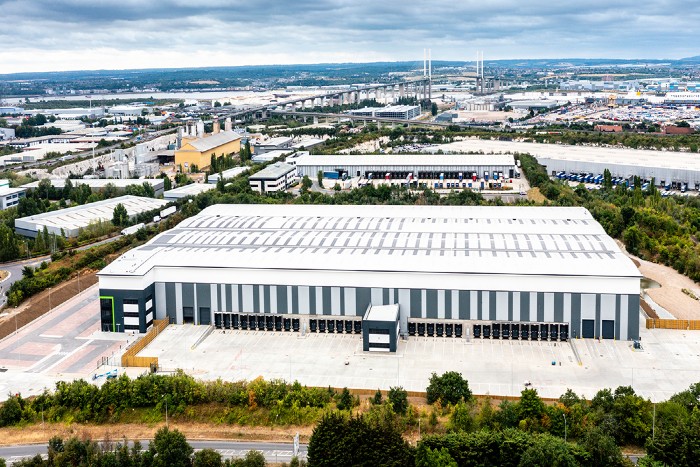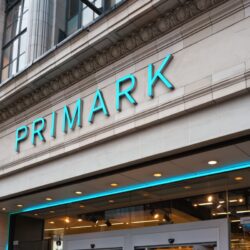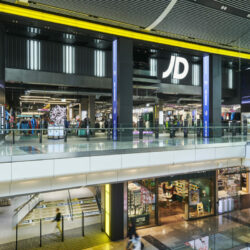Today’s supply chains need to be more agile than ever. While the last mile has long been one of the greatest challenges for urban logistics, the continued growth of e-commerce has highlighted the need for improved capacity, greater flexibility and resilience.
Consumer expectations are also growing. They want everything faster, better, greener. They expect their food to arrive within fifteen minutes, their packages within 24 hours and their chosen retailers and brands to be sustainable, all adding pressure to the last mile. So how does this happen? The answer is improved supply chains, and this starts with location.
Subscribe to Retail Gazette for free
Sign up here to get the latest news straight into your inbox each morning
Faster – streamlining the last mile
There is now a direct correlation between consumer habits, customer demand and industrial warehousing. The location of facilities is key, creating opportunities to streamline the last mile and achieve greater speed to market, ultimately improving consumer satisfaction, while addressing two major challenges facing retailers: costs and carbon emissions.
Transport accounts for approximately 50 – 70 per cent of a company’s total logistics spend, and despite consumers wanting fast and sustainable deliveries, they are often not willing to pay more for them. By bringing goods closer to large consumer populations, retailers can significantly reduce transport costs, protecting their margins and competitive edge at a time when delivery volumes and distances travelled are rising.
At Goodman, we deliver high-specification, sustainable properties in urban locations that place our customers closer to consumers around the world. Here in the UK, demand for strategically located warehouse space is high. In London and the South East alone, this reached a record 9.2 million sq ft in 2021 – an increase of 16.4 per cent year-on-year – as businesses restructured their supply chains and invested in bringing warehouses to where they are needed most.
Goodman’s Purfleet Commercial Park is a prime example. Located within half a mile of Junction 30/31 of the M25, the 343,281 sq ft warehouse sits just 16 miles from Central London, placing 21 million consumers within a two-hour drivetime.[1] Fast connections to the national motorway network, excellent freight links and proximity to three international ports also makes the location ideal for increasing supply chain efficiency and supporting on-demand deliveries.
Better – serving consumers wherever they are
As the lines between physical and digital retail continue to blur, retailers are adapting their logistics networks to cater to all forms of fulfilment – and location can play a major role.
Barclays expects further growth of ‘click and collect’, with nine in ten retailers planning to invest in these services over the next five years. This growth, paired with a need for convenient returns and positive in-store experiences, means retailers need to be able to fulfil orders anywhere and at any time.
Investing in warehouses and distribution facilities close to urban centres provides quicker access to key transport infrastructure and reduces transit times. By enabling stock to move faster, retailers can replenish store inventory more quickly, increasing efficiency across their supply chains.
Greener – location and sustainability
Location also provides the opportunity to improve retailers’ environmental performance.
By locating essential infrastructure such as warehouses and fulfilment centres close to consumers, we’re helping our customers to operate more sustainably by reducing delivery miles and lowering carbon emissions. This is particularly important as sustainability grows in importance for consumers when making purchasing decisions.
With more global cities creating Low Emissions Zones to improve air quality and reduce traffic congestion, electric delivery fleets are a necessity to those serving consumers and stores located in these areas. This often requires on-site charging points and good connectivity to off-site charging infrastructure.
One customer looking to realise the sustainability benefits of location is Mission Produce, a global leader in avocado marketing and distribution, set to open its first UK facility at Goodman’s Crossways Commercial Park in Dartford, Kent. The Park’s strategic location, adjacent to Junction 1a of the M25, offers fast access to London and the national motorway network and places 11.7 million consumers within a 60-minute drivetime[1]. The state-of-the-art ripening, packing, and forward distribution centre is expected to help streamline import logistics and reduce transit times to UK customers, all while supporting Mission Produce to decarbonise its operations and supply chain.
Retail is changing rapidly. Warehousing in the right location can tackle the faster, better greener challenge and assist retailers to meet consumers’ need for speed and value sustainably.






















